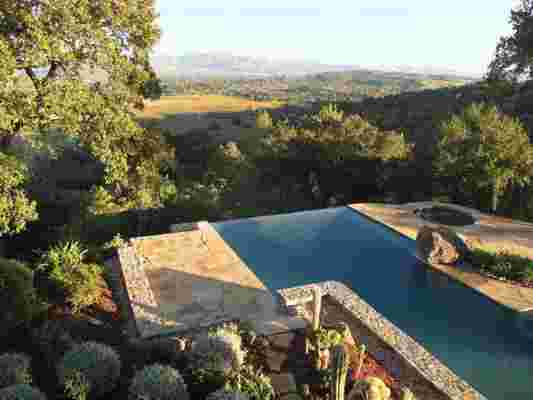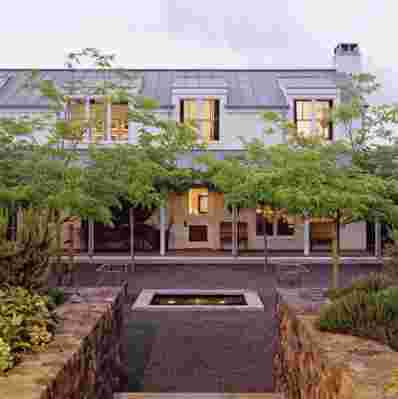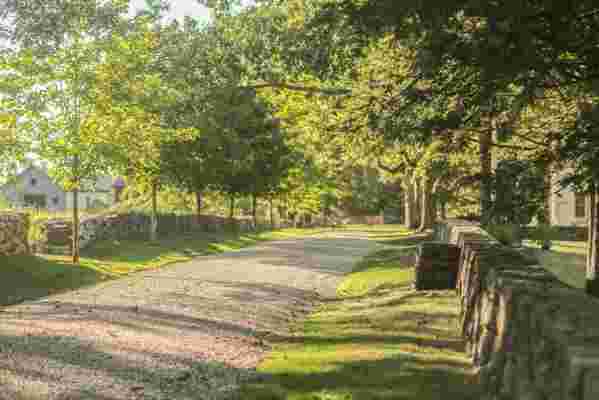Inside the Surprising Innovations of Sustainable Garden Design
As in real estate, so in sustainable landscape architecture: Location is everything. A successful coastal Florida garden is going to require some very different elements than one in California's Napa Valley. “Everything really depends on the site,” says Lauren Stimson, principal at Stephen Stimson Landscape Associates in Cambridge, Massachusetts, which is known for its agrarian approach and sensitive use of local materials.
Highly considered landscapes are all unique. However, several common denominators connect sustainable gardens everywhere. Water usage, native plantings, efficient irrigation, managing storm-water runoff, and reducing lawns are key elements to success, regardless of climate or clientele.
“Whether it's in Santa Fe or Annapolis,” says Ron Radziner, design principal at Marmol Radziner , a full-service architectural design-build firm in California known for forging connections between indoor and outdoor spaces, “our goal is to use plantings with the most appropriate use of water. Being drought-tolerant doesn't preclude a beautiful garden,” says Radziner.

From a homeowner's perspective, saving water simply makes economic sense, especially in drought-prone regions like California, where some towns and cities have begun restricting usage and fining for overages. But even in places like coastal Florida, the constant sun means high-maintenance landscapes can be expensive to keep up.
For a project in Palm Beach, Florida, landscape architect Keith Williams' client asked him to keep her water bill almost impossibly low at $500 or less per month. Nevertheless, Williams delivered a lush, romantic design that met the parameters by limiting the use of turf to just the entry and pool surround, and locating water-loving plantings in the shade. An advanced irrigation system also monitors weather and humidity, and uses drip irrigation, rather than a mist, which can quickly evaporate. Williams, partner and vice president of Nievera Williams in Palm Beach, explains that designing for water efficiency is part of the standard service he provides.

Lower-maintenance plants also require less water, so native plants and cultivars, naturally, are part of sustainable garden design. For a project in Maine, SSA used native ground covers harvested from nearby sites. Keeping existing soil on site is also a priority for the firm, which works with scientists to amend its makeup instead of digging it out. “Ultimately, we try to promote areas of plants that form a community, not just plants and trees,” says Stimson. “There's a whole dynamic going on that supports nature and wildlife.”
Exotic plant materials, however, aren't entirely taboo. Williams installed green island ficus around the foundation of a modern minimalist property, also in Palm Beach. “It's one of the most sustainable plants I can think of,” he says. “It's non-native, but it takes drought, salt, and wind well, and, of course, it's non-invasive.”
Reducing grassy areas is also paramount. SSA minimized the amount of lawn on a Massachusetts property by restoring a 20-acre meadow. Likewise, in the Marin Hills of California, Scott Lewis, of San Francisco–based Scott Lewis Landscape Architecture , replaced one property's lawn entirely with native grasses that need no watering at all. The property was completely regraded and replanted; now, the flowering hillside “looks like it was always there,” he says.

A certain amount of lawn may be aesthetically unavoidable in some projects; Williams used it in the minimal Palm Beach project to break up sight lines, for example. “But the days of grassy lawns in California are pretty much done,” says Lewis.
Selecting the appropriate greenery alone doesn't make a garden sustainable. Hardscaping matters, too, especially where it comes to managing water retention and runoff. Stone pavers and gravel, for example—rather than slabs of concrete or pavement—create permeable surfaces that allow storm water to seep back into the ground.
For a project in Napa, Lewis used pavers atop a gravel bed to create pathways. These low-heat index stones reflect heat, keeping the space cooler, and allow any water to return immediately into the ground. Where the previous garden contained fussy privets and turf, drought-tolerant ornamental grasses and rosemary now soften the serene space.
In Palm Beach, Williams used a 12-inch band of loose pebble around the building's foundation to keep the house clean in heavy rains and help the garden absorb water. For Marmol Radziner, the solution lies in breaking up slabs with gravel or planting strips, as it did for a project in Beverly Hills. “As modernists, we tend to use a lot of concrete walls and concrete pads,” says Radziner. “We have to allow for water to get back into the earth.”
Few municipalities require homeowners to collect storm water—yet—though it's an important factor in any considered landscape. At SSA's project in Massachusetts, a storm-water garden even became the organizing principle of the site's design. Now, wetland iris fill a reclaimed granite–framed garden, where the clients' children now play and catch frogs. Whether or not a client asks for it, SSA typically builds storm-water collection or bioswales (drainage courses designed to remove silt and pollution from runoff water) into its designs. “That's driven by our desire to be respectful of a site,” says Stimson.
Whether driven by economics or aesthetics, trends in sustainable gardens are catching on. Top designers are proving they don't have to swap luxury and beauty for environmental responsibility. Of course, any successful garden has to work with the physical world, not against it. But where it comes to sustainable landscapes, as Radziner says succinctly, “we're creating an enhanced version of nature.”